While depictions of Dionysus competing in drinking contests frequently appear in Roman art, this is the first time a sarcophagus featuring such a scene has been found in Israel.
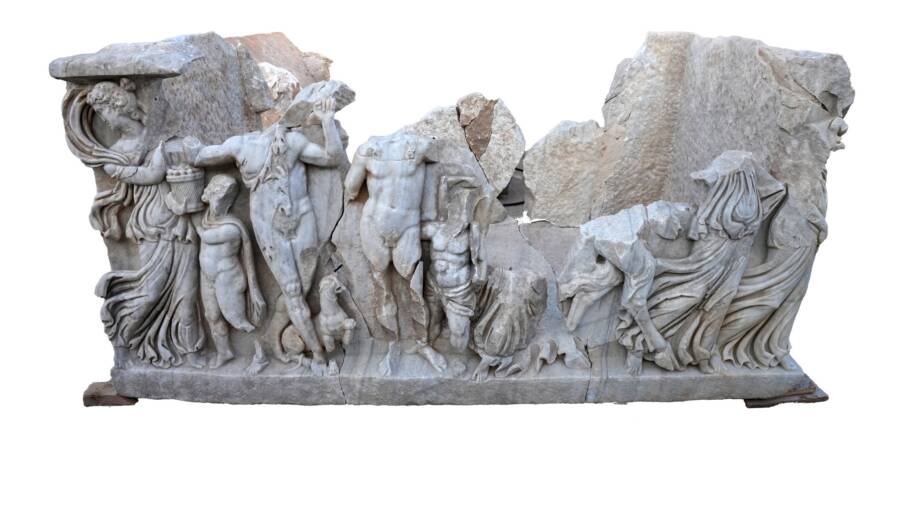
Israel Antiquities AuthorityThe Roman sarcophagus found in Israel features Dionysus, also known as Bacchus, the god of wine, fruitfulness, and ecstasy.
During excavations in Caesarea, Israel, archaeologists uncovered a stone object buried deep in the sand. To their surprise and delight, it was a sarcophagus adorned with Roman-era depictions, including what appears to be a drinking contest between Hercules and Dionysus, the god of wine.
This stunning and unexpected find is “the first of its kind in Israel,” though similar scenes of wine-drinking and revelry featuring Dionysus have been found elsewhere across the former Roman Empire.
‘Like A Scene Out Of A Movie’
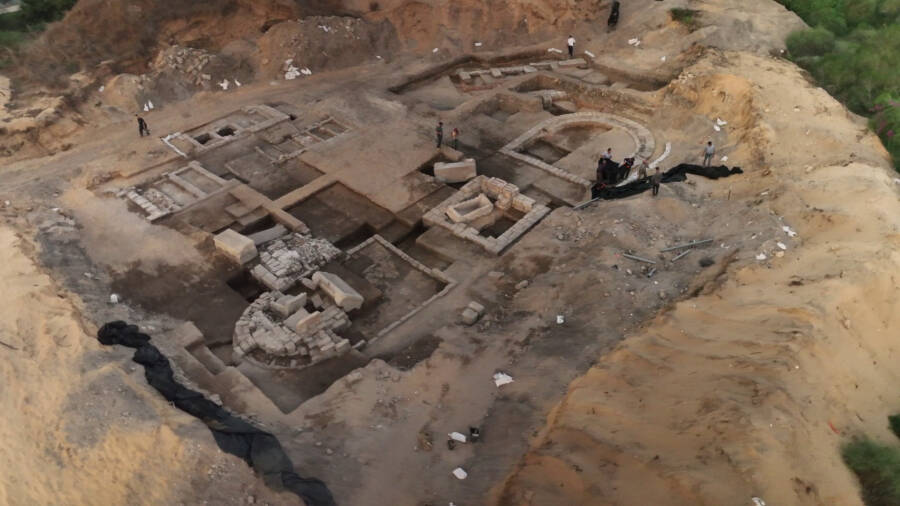
Israel Antiquities AuthorityThe excavation site in Caesarea where the sarcophagus was found.
According to a press release the Israel Antiquities Authority (IAA) posted on Facebook, the Roman sarcophagus was discovered during excavations in Caesarea, a seaside town in the north of the country.
Archaeologists were digging in a sand dune when the marble sarcophagus suddenly began to appear before their eyes.
“It was like a scene out of a movie,” IAA archaeologists Nohar Shahar and Shani Amit exclaimed in the statement. “We began removing the soft, light sand of the dune, when suddenly the tip of a marble object popped up. The entire excavation team stood around excitedly, and as we cleared more sand, we couldn’t believe what we were seeing — parts of a sarcophagus, upon which figures were carved: gods, animals, and trees. Each uncovered fragment was more impressive than the one before.”
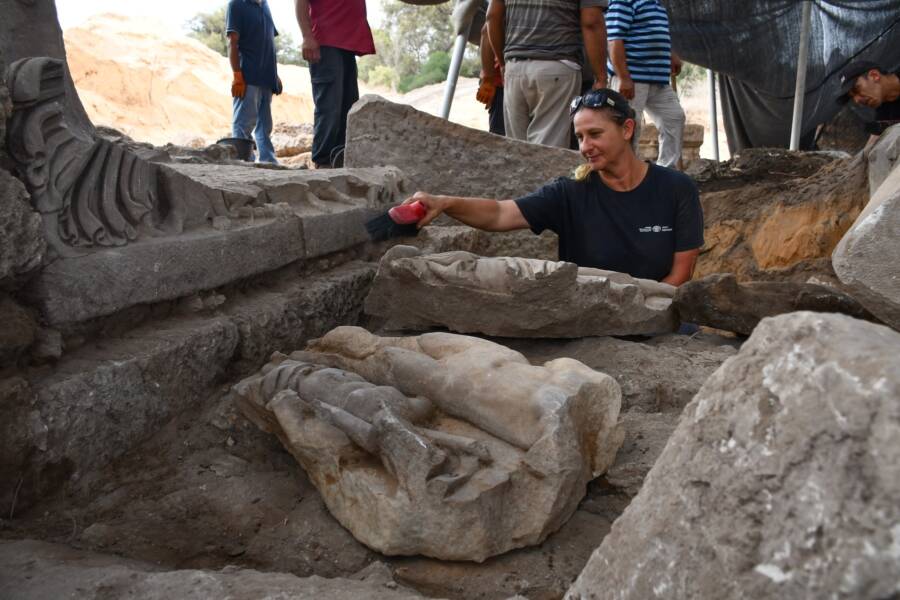
Israel Antiquities AuthorityAn archaeologist with the Roman-era marble sarcophagus.
Shahar and Amit continued: “In fact, in the very last hour of the excavation came the climax — an entire intact side of the sarcophagus, which was buried in the sand, was uncovered, which portrays the scene of Hercules lying on a lion skin, holding a cup in his hand.”
As IAA experts examined the sarcophagus more closely, they determined that the Roman-era marble coffin depicted more than just Hercules. The hero was seemingly engaged in a drinking contest with the god of wine, Dionysus, also known as Bacchus. The deity was surrounded by “a lively retinue of a host of mythological characters such as Maenads (female followers of Dionysus), satyrs, Hermes, Pan, lions, and tigers.”
Though similar depictions have been found elsewhere, this is the first time that archaeologists have found a “Dionysus and Hercules wine competition scene” on a sarcophagus in the region.
The Depiction Of Dionysus And Hercules
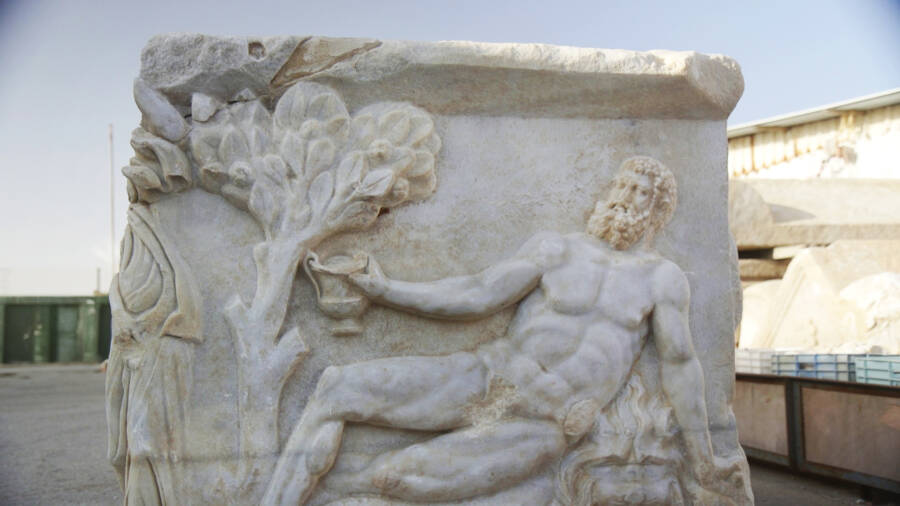
Israel Antiquities AuthorityA depiction of Hercules on the sarcophagus, lying on a lion skin and holding a cup of wine.
According to Shahar, “processions” of Dionysus are a common motif on second- and third-century sarcophagi, and similar scenes have been found in mosaics in Israel. However, there are some unique things about this sarcophagus.
“In this case, it seems that the figures are not only celebrating — they are in fact accompanying the dead on his last journey, when drinking and dancing are transformed into a symbol of liberation and transition to life in the next world,” Shahar explained. “This sarcophagus offers an unusual perspective of the idea of death — not as an end, but as the beginning of a new path.”
The discovery of the sarcophagus also suggests that the ancient town of Caesarea was larger than previously thought.
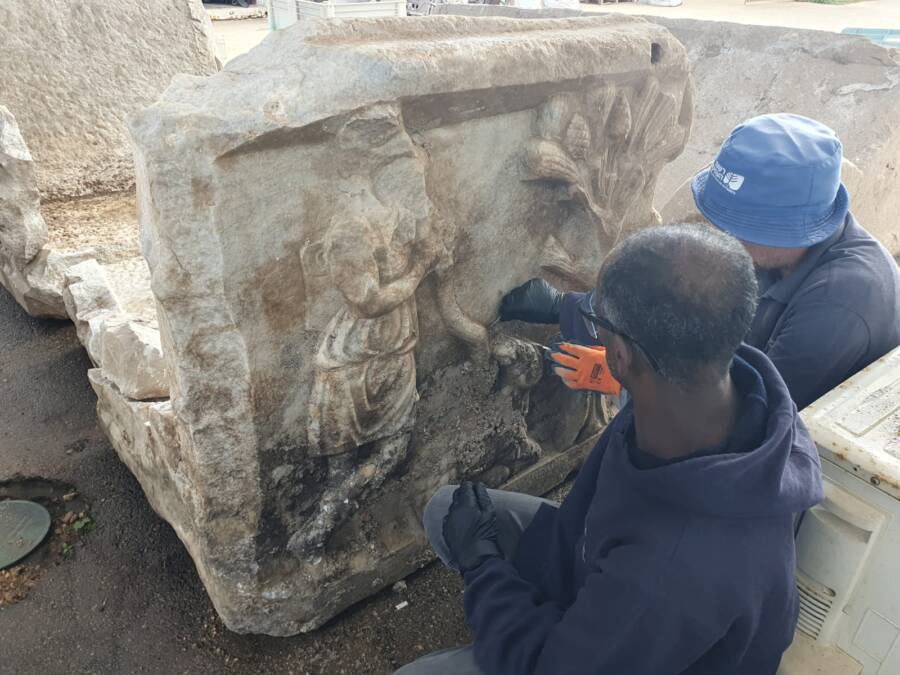
Israel Antiquities AuthorityThe sarcophagus is not only a unique find for the region, but it also suggests that the ancient town of Caesarea was larger than previously thought.
“The sarcophagus was found within an area where archaeological remains were found outside the well-known walls of Caesarea,” Shahar explained. “This means that the space leading into it was actually much wider and thus richer in finds than we thought until now.”
As to who won the drinking contest between Hercules and Dionysus depicted on the sarcophagus? According to the archaeologists, there appears to be a clear — and unsurprising — winner.
“Hercules’ condition, depicted on the sarcophagus as someone who is no longer able to stand, points to the obvious answer,” Shahar said. “Dionysus.”
After reading about the Roman-era sarcophagus found in Israel with a depiction of Hercules and Dionysus, learn about the myth of Dionysus and King Midas. Or, discover the incredible stories of some of the most fearsome Roman gladiators to fight in the arena.





